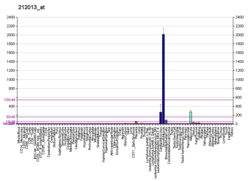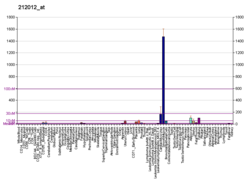| PXDN | |||||||||||||||||||||||||||||||||||||||||||||||||||
|---|---|---|---|---|---|---|---|---|---|---|---|---|---|---|---|---|---|---|---|---|---|---|---|---|---|---|---|---|---|---|---|---|---|---|---|---|---|---|---|---|---|---|---|---|---|---|---|---|---|---|---|
| Identifiers | |||||||||||||||||||||||||||||||||||||||||||||||||||
| Aliases | PXDN , COPOA, D2S448, D2S448E, MG50, PRG2, PXN, VPO, peroxidasin, ASGD7 | ||||||||||||||||||||||||||||||||||||||||||||||||||
| External IDs | OMIM: 605158; MGI: 1916925; HomoloGene: 33907; GeneCards: PXDN; OMA:PXDN - orthologs | ||||||||||||||||||||||||||||||||||||||||||||||||||
| |||||||||||||||||||||||||||||||||||||||||||||||||||
| |||||||||||||||||||||||||||||||||||||||||||||||||||
| |||||||||||||||||||||||||||||||||||||||||||||||||||
| |||||||||||||||||||||||||||||||||||||||||||||||||||
| |||||||||||||||||||||||||||||||||||||||||||||||||||
| Wikidata | |||||||||||||||||||||||||||||||||||||||||||||||||||
| |||||||||||||||||||||||||||||||||||||||||||||||||||
Peroxidasin homolog is a protein that in humans is encoded by the PXDN gene. [5] [6] [7]
Contents
Peroxidasin requires ionic bromine as a co-factor, making bromine an essential element for human life. [8]





